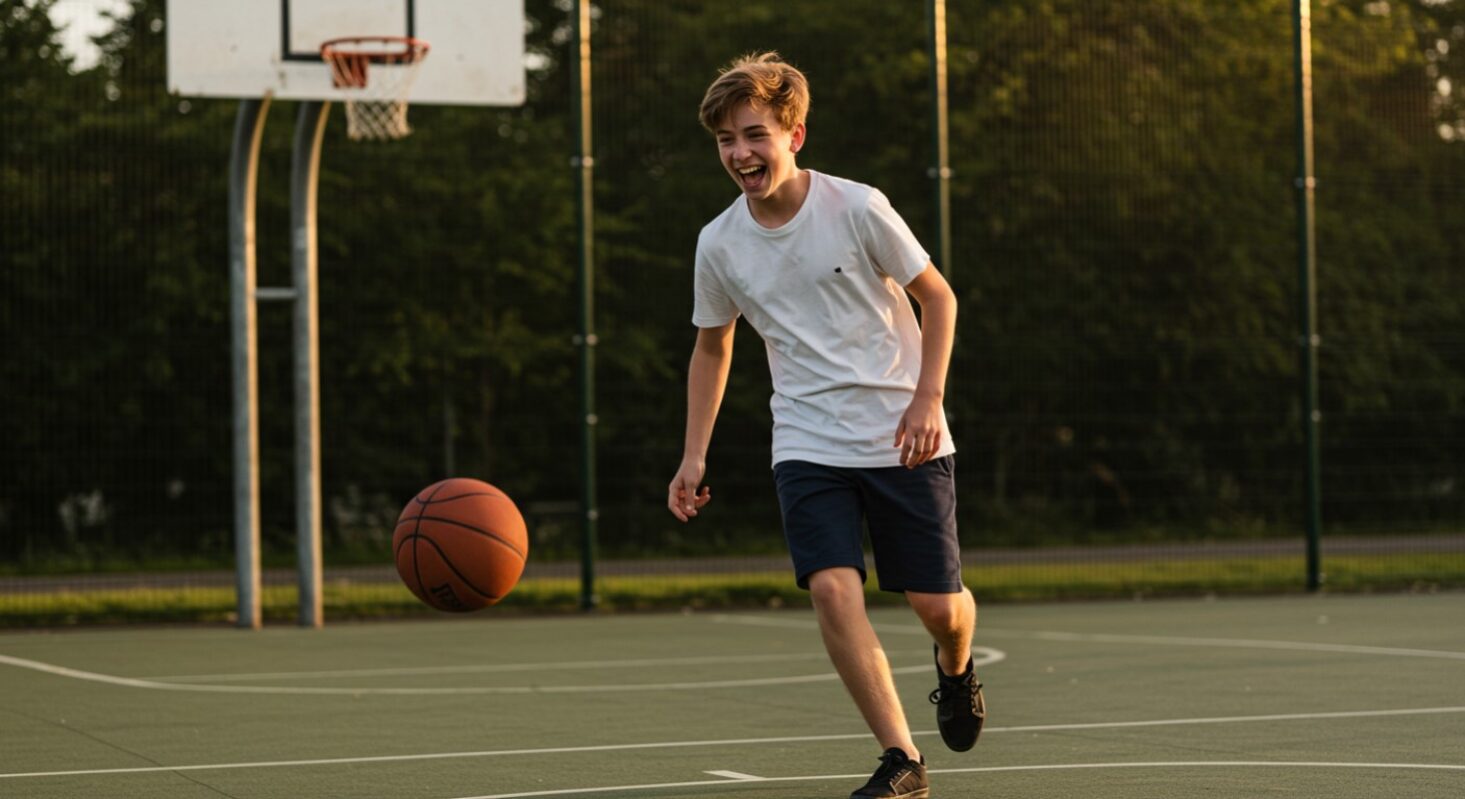
How to Play Basketball for Beginners
Basketball is one of the most popular sports in the world, played in schools, clubs, neighbourhood courts, and professional arenas across every continent. Its appeal lies in its simplicity — all you need is a ball and a hoop to get started. Unlike some sports that require expensive gear or large teams, basketball is accessible. You can practise alone by shooting hoops, play casually with a few friends in a park, or join a structured five-on-five game.
For beginners, basketball offers a fantastic balance of exercise, skill development, and social connection. It improves coordination, builds stamina, and teaches teamwork. The game is fast-paced but flexible, so you can start small and gradually learn more complex techniques.
This guide will break down how to play basketball for beginners into easy-to-understand sections, covering the rules, skills, positions, drills, and safety tips every beginner needs to know. By the end, you’ll have a clear understanding of how to step onto the court with confidence.
Understanding the Basics of Basketball
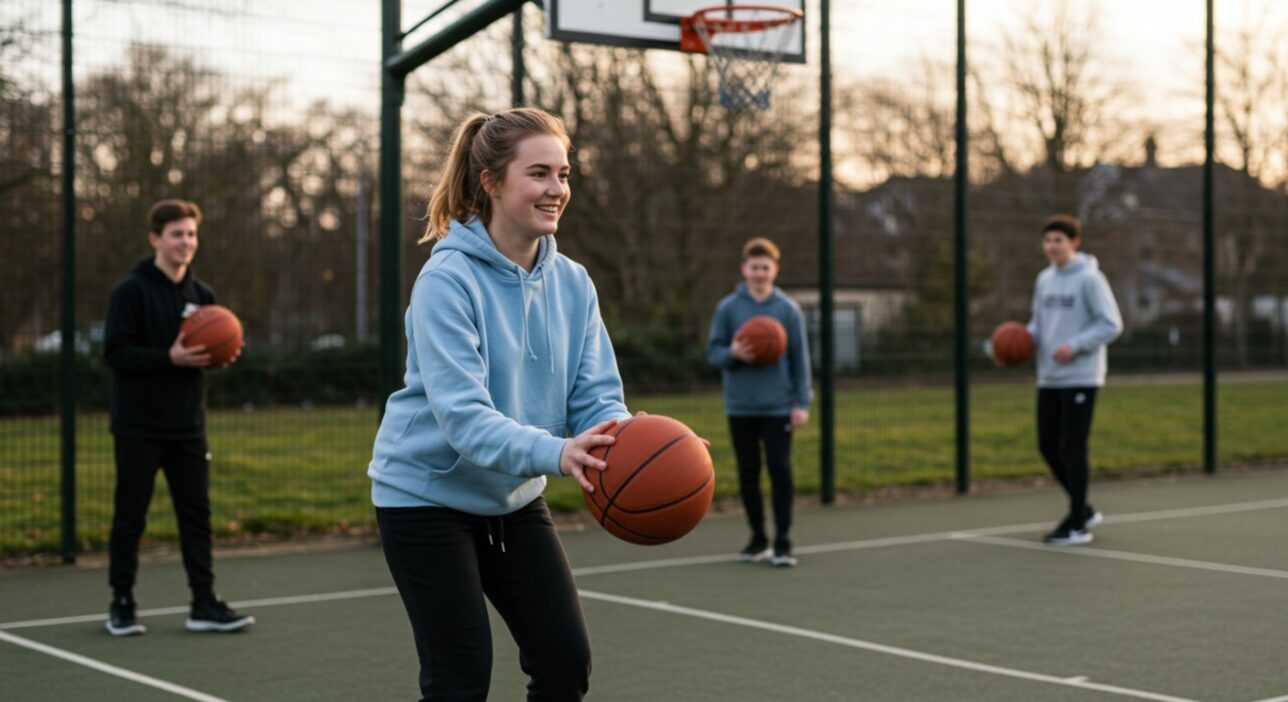
The basic idea of basketball is straightforward: two teams compete to score more points by shooting the ball into the opponent’s hoop. Each hoop is mounted 10 feet high, fixed at either end of the court.
The court itself is divided into two halves. Each half includes a free-throw line, a three-point arc, and a painted rectangular area near the basket known as “the key” or “the paint.” These zones determine where shots are taken from and what they’re worth.
All you really need to start playing is:
-
A basketball. Size 7 for men, size 6 for women, and smaller youth sizes for kids.
-
A hoop mounted at regulation height or adjusted lower for younger players.
-
Trainers with good grip to prevent slipping.
-
Comfortable sports clothing that allows movement.
Even if you don’t have a full court, you can still practise basketball on a driveway, at a school gym, or in a local park.
Basic Rules of Basketball for Beginners
Like all sports, basketball has rules to keep the game fair. Beginners don’t need to memorise the entire rulebook, but learning the essentials makes playing much smoother.
Number of players
In official games, each team has five players on court at once. In casual games, you can play three-on-three, two-on-two, or even one-on-one.
Starting the game
Games begin with a tip-off, where the referee throws the ball in the air between two players who jump to gain possession. In casual games, you can simply give one team the ball to start.
Scoring
-
Shots made inside the three-point arc = 2 points.
-
Shots made from outside the arc = 3 points.
-
Free throws from the free-throw line = 1 point each.
Fouls and violations
-
Travelling: taking too many steps without dribbling.
-
Double-dribble: dribbling, stopping, and then dribbling again.
-
Carrying: holding the ball under your hand while dribbling.
-
Personal foul: illegal contact such as pushing, hitting, or blocking unfairly.
-
Technical foul: unsportsmanlike behaviour.
Game length
Professional games are played in quarters (often 10–12 minutes each). Beginners can keep things simple: play to a set score such as 11 or 21 points, or use shorter halves.
Understanding these basics ensures you can join a game without confusion.
Essential Basketball Skills Every Beginner Should Learn

Basketball is a skill-based sport, and the earlier you practise the fundamentals, the quicker you’ll improve. The five core skills are dribbling, passing, shooting, defence, and rebounding.
Dribbling
Dribbling is how players move with the ball. Use your fingertips, not your palms, to control the bounce. Keep your dribble low and controlled when defending against opponents, and higher and faster when sprinting into open space. Common beginner mistakes include watching the ball instead of looking up and bouncing it too high.
Passing
Basketball is a team sport, and passing keeps the ball moving. Learn three basic passes:
-
Chest pass: direct and fast, from your chest to your teammate’s chest.
-
Bounce pass: bounce the ball once so it rises into your teammate’s hands.
-
Overhead pass: for long distances, thrown from above your head.
Good passing builds trust and creates scoring opportunities.
Shooting
Scoring is the most exciting part of basketball, but it requires technique:
-
Stand with feet shoulder-width apart and knees slightly bent.
-
Hold the ball with your shooting hand under the ball and your guide hand at the side.
-
Focus on the hoop, push upward, and follow through with a flick of your wrist.
Start with layups (close-range shots while moving toward the basket), then progress to jump shots and free throws.
Defence
Good defence prevents the other team from scoring. Begin with a low, balanced stance: knees bent, back straight, and arms wide. Shuffle sideways rather than crossing your feet, keeping yourself between the opponent and the hoop.
Rebounding
When a shot misses, the ball rebounds. Position yourself close to the hoop, “box out” by placing your body between your opponent and the basket, and grab the ball with both hands. Rebounding is crucial because it gives your team extra chances to score.
Player Positions and Their Roles
While casual games don’t always follow strict positions, official basketball has five main roles.
-
Point Guard (PG) – often the quickest player, responsible for dribbling, organising plays, and distributing passes.
-
Shooting Guard (SG) – a strong scorer who excels at outside shooting and driving to the basket.
-
Small Forward (SF) – versatile, contributing both offensively and defensively.
-
Power Forward (PF) – plays near the basket, grabbing rebounds and scoring inside.
-
Centre (C) – usually the tallest player, controlling the paint area, blocking shots, and scoring close to the rim.
Beginners don’t need to specialise immediately, but understanding these roles helps you see how different skills contribute to the team.
Playing Your First Game of Basketball
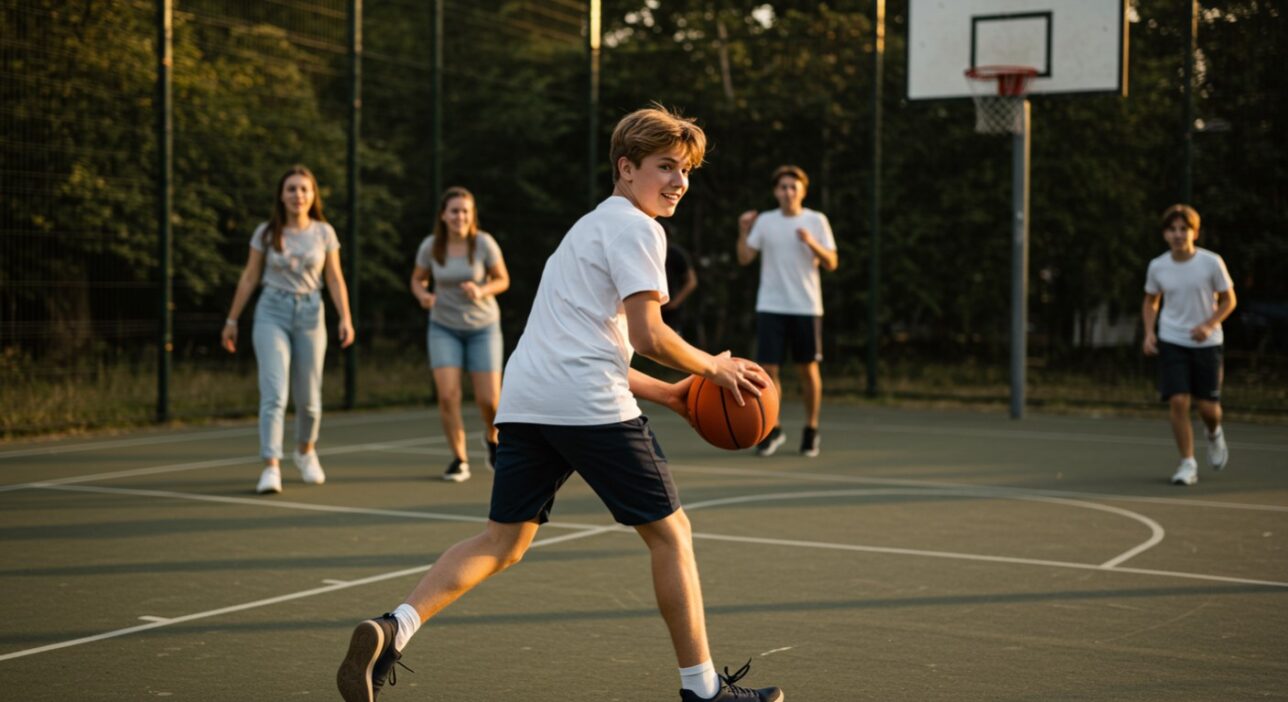
For beginners, it’s best to keep games short and simple. Start with half-court matches using one basket. Teams can be two-on-two or three-on-three. These formats reduce running distance and make it easier to focus on learning the rules.
Set a target score such as 11 or 15 points. Use casual rules like “winner’s ball” (the scoring team gets the ball back) or “loser’s ball” (the other team gets possession after a score) depending on the group’s preference.
Don’t worry about a shot clock or advanced violations at first. The focus should be on learning how to dribble, pass, and shoot under real conditions while enjoying the pace of the game.
Beginner Basketball Drills to Practise
Practising alone or with a partner helps you build skills faster. Here are some beginner-friendly drills:
-
Dribbling cones: Set up objects in a line and practise weaving through them while dribbling.
-
Zig-zag defence: Shuffle sideways in a zig-zag across the court to improve defensive footwork.
-
Layup lines: Run from the three-point line, dribble, and finish with a layup. Rotate sides to practise both hands.
-
Spot shooting: Pick five spots around the key and shoot from each, tracking your success rate.
-
HORSE: A fun shooting game where players copy each other’s shots.
-
Knockout: Players line up, each trying to score before the person behind them makes a basket.
These drills combine skill-building with fun, making practice feel less like work.
Building Fitness for Basketball
Basketball is physically demanding. To enjoy the game and avoid fatigue, beginners should build a base of fitness.
-
Agility: Ladder drills, cone sprints, and quick feet exercises help you change direction rapidly.
-
Strength: Bodyweight squats, lunges, and push-ups build power for jumping and physical play.
-
Endurance: Interval running mimics basketball’s bursts of energy. Try sprinting for 30 seconds, then jogging for 60, repeating 10 times.
-
Flexibility: Stretching before and after play reduces the risk of injury and improves mobility.
You don’t need to be an elite athlete to start. Regular practice will naturally improve your conditioning over time.
Playing Basketball Safely
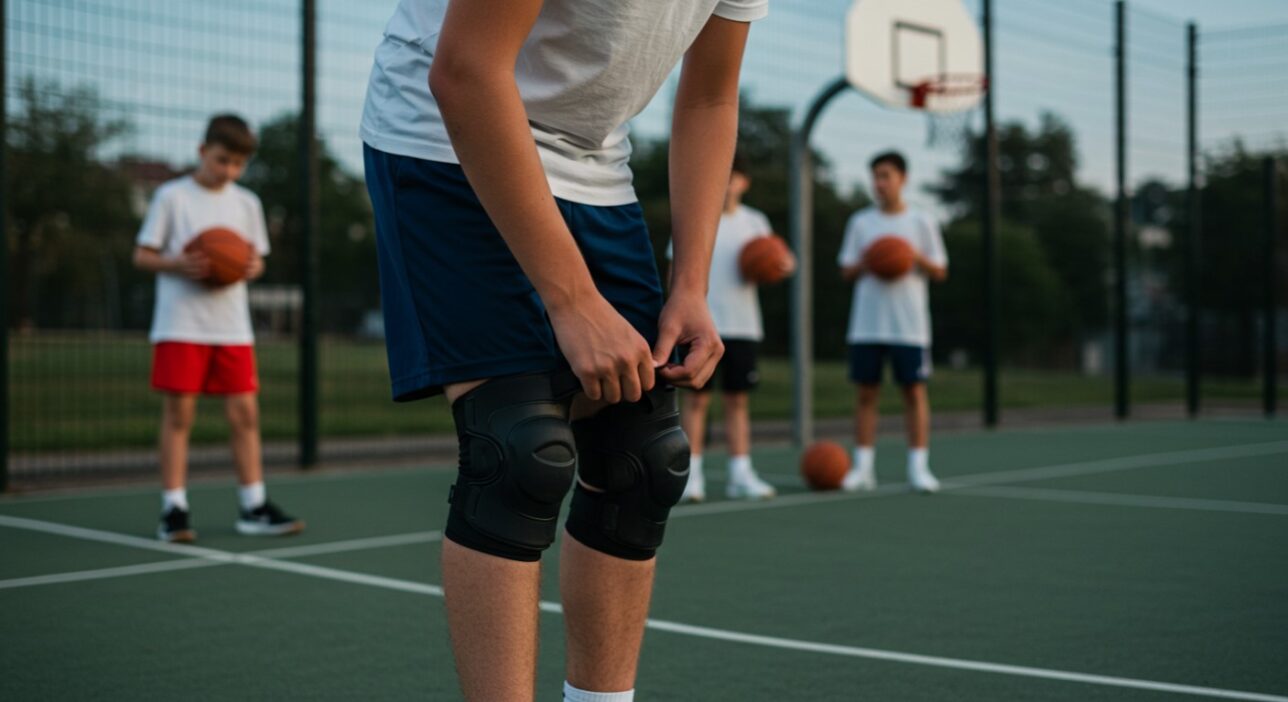
Safety is crucial, especially for beginners still learning control.
-
Wear shoes with ankle support and non-slip soles.
-
Warm up with light jogging and stretching before games.
-
Stay hydrated, especially in outdoor summer play.
-
Learn to avoid reckless fouls like shoving or reaching across opponents.
-
Listen to your body — rest if you feel pain rather than pushing through.
By respecting safety, you can play more often and enjoy steady improvement.
Growing Your Basketball Knowledge
Improvement doesn’t only come from playing — watching and learning from others accelerates growth.
-
Watch professional games to study technique, positioning, and strategy.
-
Learn referee hand signals to understand calls.
-
Join a local club, school team, or community league for structured play.
-
Play pickup games at local courts to gain experience against different styles.
The more exposure you have, the quicker you’ll develop basketball instincts.
Staying Motivated and Having Fun
The best way to improve in basketball is to stay consistent. Practise a little each week, set achievable goals such as “make 10 free throws in a row,” and track your progress. Celebrate small wins like your first clean layup or successful defensive stop.
Most importantly, remember that basketball is meant to be fun. Laugh off mistakes, enjoy the social side, and keep challenging yourself without pressure. With time and effort, you’ll not only learn to play but also fall in love with the game.
Conclusion: How To Play Basketball for Beginners
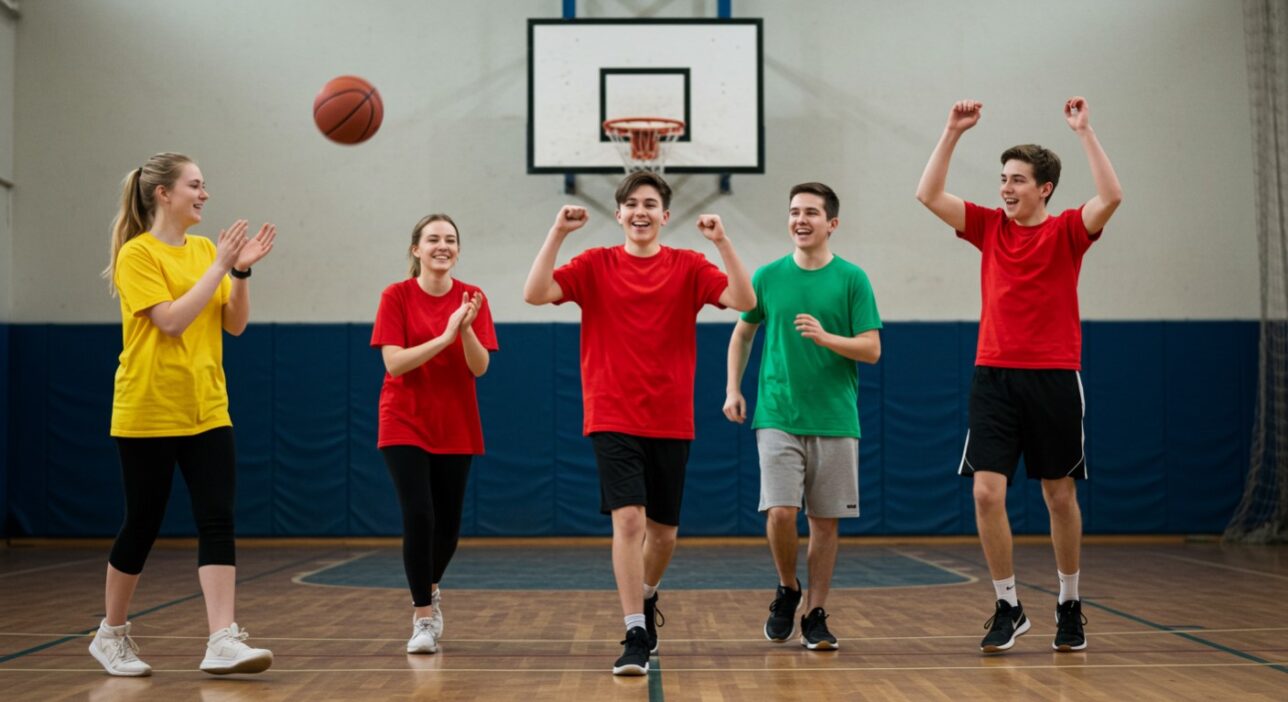
Basketball is easy to start but endlessly rewarding to improve. By learning the basic rules, mastering core skills like dribbling, passing, and shooting, and playing simple games, beginners can quickly gain confidence on the court. With practice drills, fitness training, and exposure to real games, improvement comes naturally.
Whether you’re shooting hoops in a driveway, joining a friendly pub league, or watching the professionals for inspiration, basketball offers something for everyone. Keep it safe, keep it fun, and enjoy the journey — because the more you play, the more you’ll realise why basketball is one of the world’s greatest games.





